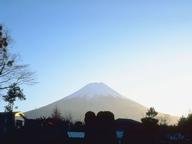Quiz Answer Key and Fun Facts
1. Which rather avian term describes the column of ash that is ejected by an erupting volcano?
2. Which category of volcano has relatively gently slopes and is generally large in area?
3. These mineral chimneys remain after the surrounding softer volcanic material eroded away. These were formed by steam vents, openings in the crust that allow superheated water and gases to escape. What is the scientific name for these steam vents?
4. This picture shows a day's worth of aircraft flights over the most volcanically-active area of the contiguous U.S. Which mountain range is this?
5. These photos, the bottom a close-up, shows a volcanic feature that results from the slow extrusion of thick lava. What geometric-named feature is this?
6. This type of volcano is made up of small, usually unconsolidated, pieces of material that appear to be burnt. These steep-sided features can be side-vents on larger volcanoes or can be free-standing volcanoes. What is the "burnt" name for this feature?
7. When most people think of "volcano", they picture a symmetrical, steep-sided cone such as Mt. Fuji. Formed by repeated eruptions of different types of material that forms layers, how is this type of volcano known?
8. Yes, volcanoes do erupt under water. What are these volcanoes known as?
9. Tuyas are rare volcanic mountains that are found in Iceland, British Columbia and a few other similar places. These volcanoes are formed when a volcano erupts through what material?
10. Although not a typical volcano since no molten rock is extruded, what is a common name for the pictured volcanic feature?
Source: Author
wjames
This quiz was reviewed by FunTrivia editor
rossian before going online.
Any errors found in FunTrivia content are routinely corrected through our feedback system.

